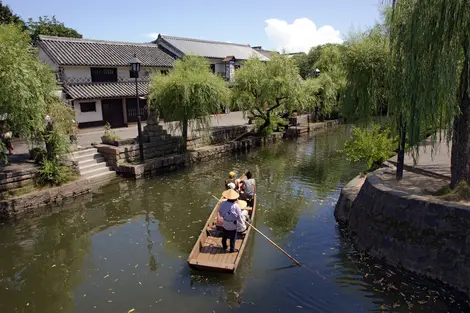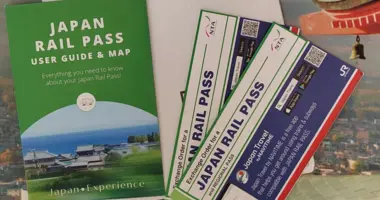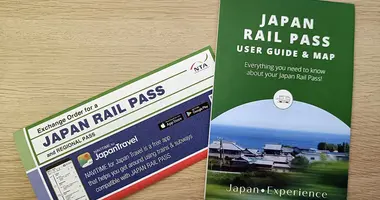The Sanyo Shinkansen: From Kansai to Kyushu
- Published on : 27/12/2024
- by : Joshua
- Youtube
Going between Shin-Osaka Station in Kansai and Hakata Station, the major station in Fukuoka City in Kyushu, the Sanyo Shinkansen Line is one of the most prominent Shinkansen bullet trains, not just in Japan but the entire world! Often serving as an extension for the Tokaido Shinkansen Line, travelers can go to major destinations like Himeji, Hiroshima, Yamaguchi, and Fukuoka.
One of Japan's most recognizable high-speed rail networks is the Sanyo Shinkansen bullet train. It links two of Japan's most important cultural and economic centers, Osaka in the Kansai region, the third-largest city in all of Japan, and Fukuoka, the largest city on the most southern main island of Kyushu. With top speeds of 300 km/h (186 mph) and significantly shorter travel times, the Sanyo Shinkansen has transformed travel in western Japan since its opening in 1972. Every year, millions of people choose it as their preferred form of transportation due to its comfortable, efficient design, and reliability. Beyond its practicality, the Sanyo Shinkansen is a prime example of Japan's dedication to sustainability, efficiency, and innovation in transportation.
An overview of the Sanyo Shinkansen
As previously mentioned, the Sanyo Shinkansen bullet train was opened in 1972, five years after its construction began. At this time, the Shinkansen bullet train line only went up to Okayama Prefecture but was extended all the way out to Hakata Station in Fukuoka three years later, in 1975.
The Sanyo Shinkansen is often and is actually jointly operated with the Tokaido Shinkansen bullet train line, the world’s first ever bullet train line. This line was opened in 1964 in conjunction with the Tokyo Olympics. The Tokaido Shinkansen Line connects the country’s capital of Tokyo to the Kansai Region, and thus, it is taken along with the Sanyo Shinkansen to get all the way from Tokyo to Fukuoka.
A number of different bullet trains operate on the Sanyo Shinkansen, namely the Nozomi Shinkansen, the Mizuho Shinkansen, the Kodama Shinkansen, and the Hikari Shinkansen. Many of these Shinkansen bullet trains extend from the Tokaido Shinkansen, with the Nozomi being the most express option, and Kodama Shinkansen stopping at each station on the route.
Stops for the Sanyo Shinkansen
The Sanyo Shinkansen’s terminal stations are Shin-Osaka Station in Osaka and then Hakata Station in Fukuoka City, Fukuoka Prefecture. The Sanyo Shinkansen and all the stations it stops at are part of the greater JR West network of public transportation, meaning that they will have JR customer service offices (called Midor-no-Madoguchi). These are locations where regional passes and National Japan Rail Pass vouchers can be exchanged, as well as reservations for Shinkansen and limited express trains.
The following stations are stops for the Sanyo Shinkansen bullet train line:
- Shin-Osaka Station in Osaka
- Shin-Kobe Station Hyogo Prefecture
- Nishi-Akashi Station Hyogo Prefecture
- Himeji Station in Hyogo Prefecture
- Aioi Statio in Hyogo Precture
- Okayama Station in Okayama Prefecture
- Shin-Kurashiki in Okayama Prefecture
- Fukuyama Station in Hiroshima Prefecture
- Shin-Onomichi Station in Hiroshima Prefecture
- Mihara Station in Hiroshima Prefecture
- Higashi-Hiroshima Station in Hiroshima Prefecture
- Shin-Iwakuni Station in Yamaguchi Prefecture
- Tokuyama Station in Yamaguchi Prefecture
- Asa Station in Yamaguchi Prefecture
- Shin-Shimonoseki Station in Yamaguchi Prefecture
- Kokura Station in Fukuoka Precture
- Hakata Station in Fukuoka Prefecture
From Hakata Station, the Shinkansen bullet train continues on to the Kyushu Shinkansen that goes out to the rest of the island of Kyushu, out to destinations like Kumamoto, Nagasaki, and Kagoshima.
Travel highlights of the Sanyo Shinkansen
Several important cities and destinations in western Japan are connected by the Sanyo Shinkansen, and each one offers distinctive sights and cultural experiences:
Osaka: The line's starting point, Osaka is known as Japan's culinary capital and is well-known for its takoyaki and okonomiyaki as well as its lively nightlife in neighborhoods like Dotonbori. Additionally, it is the location of famous sites like Universal Studios Japan and Osaka Castle.
Kobe: Well-known for its international atmosphere, Kobe is home to the picturesque shoreline, Meriken Park, and the old Kitano neighborhood. It is well known across the world for its Kobe Beef, Wagyu renowned for its marbling and tenderness.
Himeji: Himeji Castle, a UNESCO World Heritage Site and one of Japan's most exquisite specimens of feudal-era architecture, is the city's most well-known feature.
Okayama: Okayama is home to the neighboring Kurashiki Bikan Historical Quarter, which has alleys from the Edo era that have been preserved, and Korakuen Garden, one of Japan's top three landscape gardens.
Hiroshima: The Peace Memorial Park and Museum and the famous Itsukushima Shrine on Miyajima Island are located in Hiroshima, a city of significant historical significance.
Yamaguchi: The famous Kintaikyo Bridge and Akiyoshido Cave are just two examples of the natural beauty and cultural legacy found in Yamaguchi.
Fukuoka: The Sanyo Shinkansen's terminal station, Fukuoka is a bustling city renowned for its thriving culinary scene, especially its Hakata ramen and outdoor "yatai" food stalls, as well as its Canal City Hakata mall and Ohori Park .
Accessing the Sanyo Shinkansen
Tickets for the Sanyo Shinkansen can be reserved and purchased online as well as at JR Stations at select ticket kiosks and Midori-no-Madoguchi offices. The famous National Japan Rail Pass also allows for access to the Sanyo Shinkansen bullet train line, though Nozomi trains on this line require an additional surcharge depending on the departing and destination station due to their express services.
There are also a number of regional rail pass options that grant access to the Sanyo Shinkansen. Regional passes operate like the National Japan Rail Pass, which encompasses wide-ranging travel all in one ticket but operates in designated areas. Some options for these regional passes include the Kansai Wide Area Pass that allows Sanyo Shinkansen access between Shin-Osaka Station and Okayama Station, the JR West All Area Pass that allows access throughout the whole Sanyo Shinkansen Line between Shin-Osaka Station and Hakata Station, the Kansai Hiroshima Pass that allows access between Hiroshima Station and Hakata Station, and, of course, the Sanyo Sanin Pass that also allows access through the whole line between Hiroshima Station and Hakata Station. Depending on your travel needs, one of these options may be worth looking into for your next trip out to Japan!






























